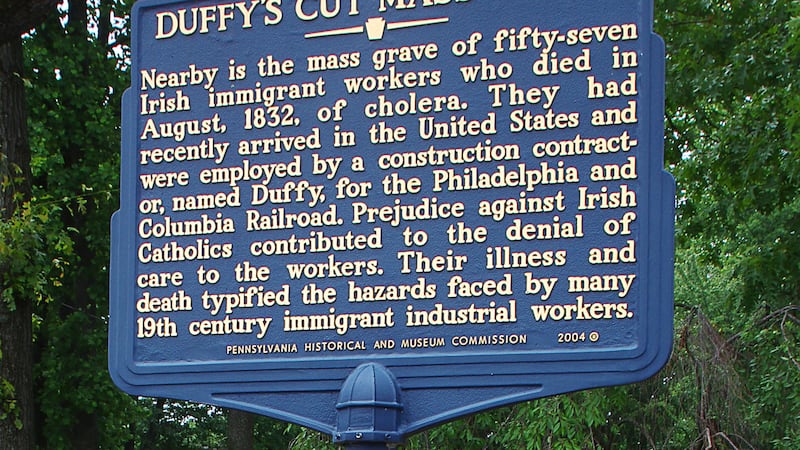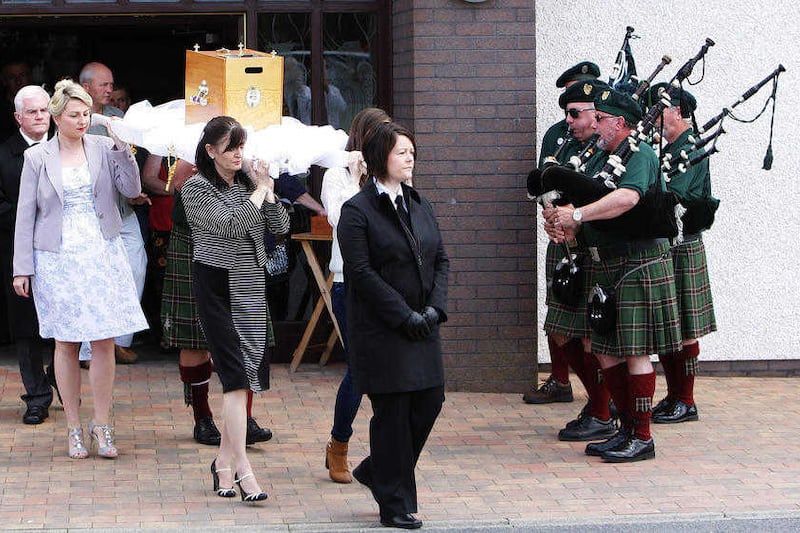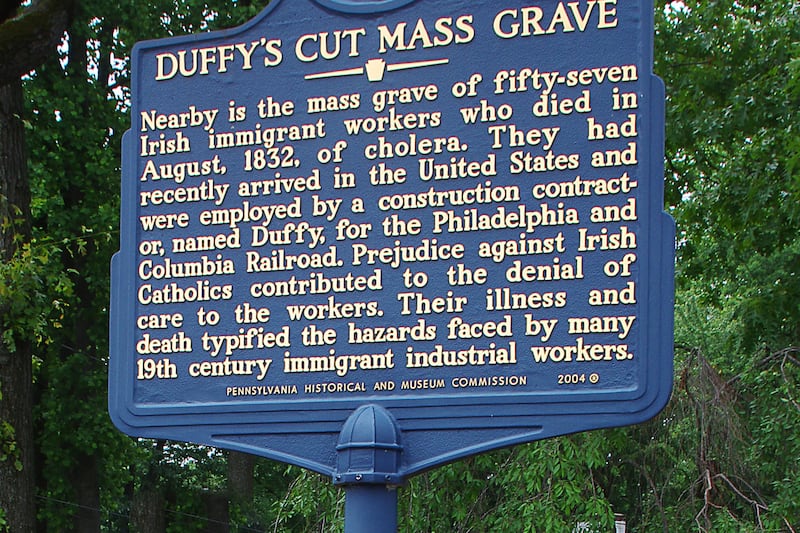The remains of a woman murdered in America 183 years ago are to be brought home in what is a story of "hopes dashed and dreams shattered".
A wake and funeral will take place in Clonoe, near Coalisland in County Tyrone, for Catherine Burns, who left for the United States in 1832 and lay buried in an unmarked grave for almost two centuries.
The 29-year-old was among a group of 57 Irish immigrants from Donegal, Tyrone, and Derry who were hired to build a railway between Philadelphia and Columbia, on a site that became known as Duffy's Cut.
Within six weeks, all were dead of cholera and possibly violence, and were buried anonymously in a ditch.
The tragedy has been researched at Immaculata University by The Duffy's Cut Project which is an ongoing archival and archaeological search into their lives and deaths, seeking to provide insight into early 19th Century attitudes about industry, immigration, and disease in Pennsylvania.
It is not known exactly where in County Tyrone Ms Burns was from, but an Irish wake featuring music and dance is being held in Clonoe on Friday night, followed by a funeral mass and burial in Clonoe Chapel on Sunday.
In the parish bulletin, parish priest Father Benny Fee wrote: "Les Miserables is a great musical and my favourite song in it is Bring Him Home. And these days I find myself humming that tune because the parish is busy preparing to bring not Him to bring Her home.
"After being buried in an un-marked grave for over a century Catherine Burns is on her way home to her native Tyrone to rest in Clonoe."
Father Fee said Ms Burns was not the only one, adding: "Her story of hopes dashed and dreams shattered is not unique. So in honouring the homecoming of Catherine we are honouring countless other exiles who sailed out of Ireland in the hope of a new life far from home but did not find the streets paved with gold."
A memorial sign at Duffy's Cut says: "Nearby is the mass grave of fifty-seven Irish immigrant workers who died in August, 1832, of cholera.
"They had recently arrived in the United States and were employed by a construction contractor, named Duffy, for the Philadelphia and Columbia Railroad.
"Prejudice against Irish Catholics contributed to the denial of care to the workers. Their illness and death typified the hazards faced by many 19th century immigrant industrial workers."
Dr William Watson, professor of history at Immaculata University, said the sign was erected in 2004 when the traditional story of the death of the work crew by cholera was what was available to them.
He said the skull of Ms Burns shows "massive perimortem violence by means of a sharp implement which would have caused her death".
He added: "We believe Catherine was murdered in an attempt to contain the cholera epidemic, which the locals believed was being spread by the immigrant railroad workers.
"The workers were a convenient scapegoat for the community, which did not understand the etiology of the disease."
Dr Watson said they believe the first seven they excavated were healthy and fled the valley.
They were all murdered with no defensive wounds - one man dying of a bullet in the head after an axe blow - and buried in coffins with an extremely large number of nails to seal the lids - averaging over 100 nails per coffin lid, he said.
It is believed the lids had so many nails in order to prevent them from being opened.
He said they believe the coffins were brought back to the valley to be buried.







